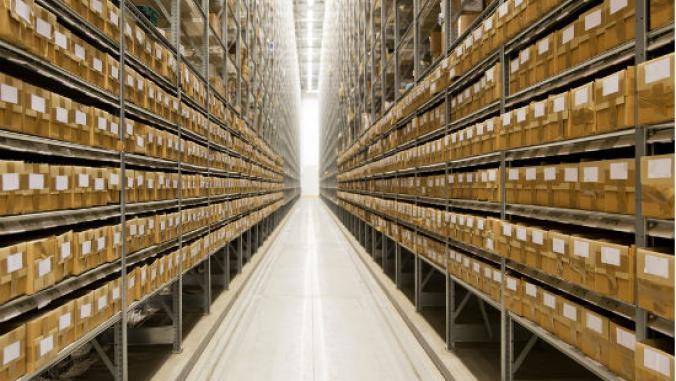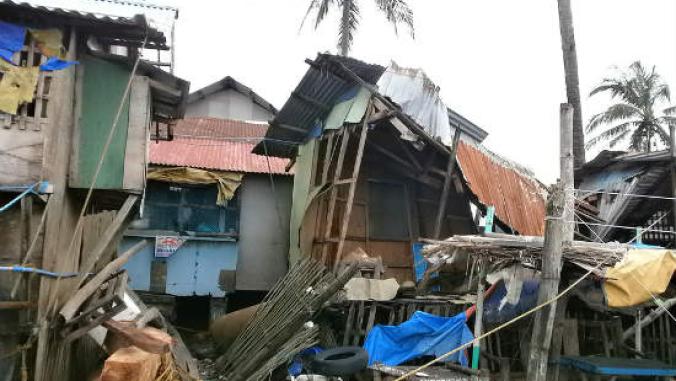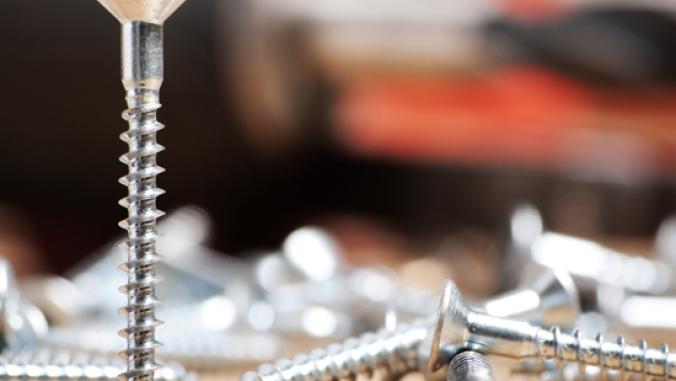How Net-Works fishes for a triple bottom line
<p>Interface is helping villagers in the Philippines collect old fishing nets to be recycled into carpet yard. Is the program too good to be true?</p>

Nylon net via Pandiyan, Flickr
An impoverished and spectacularly biodiverse region of the Philippines, Danajon Bank, boasts one of only six double barrier reefs in the world. But it is also one of the planet's most degraded coral reefs due to unsustainable fishing practices and the dumping of enough worn fishing nets to circle the earth 1.5 times if laid out end to end.
Working with a global conservation organization, the Zoological Society of London (ZSL), Interface has created a partnership called Net-Works that works with local people in 26 villages in Danajon to collect, clean, and bale old nylon fishing nets. Thanks to the Econyl Regeneration System, an innovative process developed by nylon producer Aquafil, the nets can then be recycled into new carpet fiber.
Less trash in the ocean, new income for impoverished people and beautiful new carpet from recycled materials. What's not to like? Could this nascent supply chain initiative be a path to the kind of triple bottom line fantasy we've all been searching for?
In last month's column, I examined a commercial about turning PET bottles into carpet that sounded good until we took a closer look. How does this happy recycling story in Danajon Bank hold up under scrutiny?
1. Does using the recycled material reduce the use of virgin materials and reduce the life cycle environmental impact of producing the product?
This brings clouds of doubt over our Danajon Bank recycling fantasy when you consider that the fishing nets are shipped from the Philippines back to Aquafil in Europe, and then to one of Interface's carpet factories in Europe, the United States or East Asia as finished yarn. Doesn't all that transportation offset any environmental benefits of using recycled content nylon instead of virgin materials?
Actually, it doesn't.
This is exactly the kind of comparison that life cycle assessment (LCA) is good at making. Patagonia has made these LCA calculations for its own global supply chain for polyester garment recycling. Even after accounting for transportation of recycled materials from California to Asia and back, using recycled polyester emits 71 percent fewer greenhouse gas emissions than making polyester from virgin petrochemicals.
The Net-Works global supply lines are bit longer than Patagonia's, but the carbon footprint of virgin nylon is also about five times that of virgin polyester, so sourcing recycled nylon from the Philippines still has 56 percent less climate change impact than using virgin nylon. The Danajon nets become part of Aquafil's Econyl nylon-6, made entirely from non-virgin sources by regenerating fishing nets, carpet waste and industrial scrap (including 50 percent post-consumer materials), yielding all the durability required for commercial carpet without the egregious environmental footprint associated with making this plastic from virgin oil.
2. Does using the recycled material reduce the negative impacts associated with end-of-life disposal?
If the first question took some serious explaining, the second is more intuitive. Just the removal of the fishing nets from reefs, beaches and other habitats in Danajon Bank would be ecologically beneficial, even if no one recycled them. Fishing nets discarded in the ocean do not know that no one will pull them up again. They continue entrapping fish, turtles, seals and other sea life. This phenomenon is known as "ghost fishing" and is one factor that has degraded the fisheries and damaged the economy of the Danajon Bank and other ocean-dependent communities worldwide.
In 2011, Aquafil launched a program to source new waste streams to feed its Econyl plant, including collection of used nylon nets from the aquaculture and fishing industries. This led Miriam Turner, Interface's assistant vice president of co-Innovation, to ask, "Could we take this down to the community level and benefit some of the poorest people in the world? What if we could build a truly inclusive business model -- buying discarded nets from local fishermen and giving them extra income -- while cleaning up the beaches and oceans at the same time?"
Building in the right economic incentives, including community banking systems, ensures that Net-Works will not be a one-time, feel-good beach clean-up, but instead a viable system to keep nets from ending up on the beaches and in the water to begin with.

3. Is the recycled material used in a way that it is recoverable to cycle multiple times through a circular economy?
Once again, we come to the question of whether putting this recycled material in carpet is a dead end, inherently a "one and done" process, rather than a circular one.
The Net-Works material will live out its second useful life as the type of Aquafil yarn used for about half of Interface's U.S. carpet tile production. At end-of-life, any nylon that can be separated from other carpet tile components can be sent back to Aquafil's Econyl Regeneration System to become carpet yarn again, so the first challenge is not technological, but logistical. Our ReEntry program recovers our products from all over the United States and Europe for recycling, but we don't get everything back and the technology to cleanly separate yarn from backing exists only at our facilities in Georgia (U.S.) and the Netherlands.
In the United States, separating nylon for recycling presents a second challenge in that a substantial amount of the nylon face fiber of the carpet remains bound to the backing, even after shearing. Sheared nylon-6 "fluff" from our carpet tiles goes back to Aquafil. The remaining bound nylon is still recycled with the backing into new carpet backing, but this represents a form of downcycling for this expensive and technical material. Innovation in product design and recycling technology are required to ensure that the nylon fishing nets recovered by Net-Works live on as carpet yarn for many cycles, rather than being shifted into the recycled backing material over time by imperfect separation.
At the end of the last column, I promised to show you our perfect recycling fantasy, and this is the best we can do right now. Did we nail it yet? Well, to be fair, only a single ton of Danajon nets has been processed by Aquafil, so our fantasy is still far from realized. We hope that Net-Works, though small and new, proves that it is possible to make a product that is a solution, not a cause of global problems, as Method is attempting to do with its ocean plastic bottle. The biggest promise of recycling is to help build a better economy, one that grows the things we want more of, such as healthy ecosystems and thriving communities.
The ultimate test of recycling systems is to imagine what the world would look like if we scaled them up dramatically. If we could spread the Net-Works template to fishing communities all over the world with the right local partners, we could grow our supply of raw materials while restoring fisheries and coastal ecosystems, creating more stable and diversified local economies and reducing the environmental footprint of our products.
There's much work to be done to make this triple bottom line fantasy a global reality, but it's one more step toward proving that we really can leave the world better with every yard of carpet we make and sell.
If a carpet company can do it, maybe any company can.
Top fishing net image by Pandiyan via Flickr. Other images via Interface





